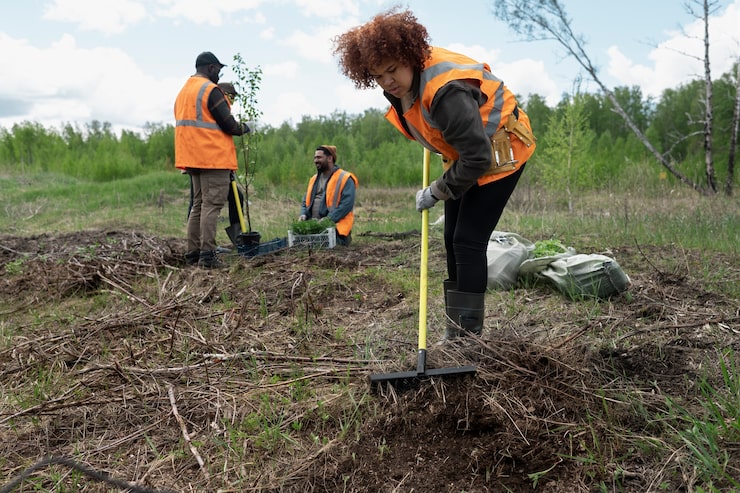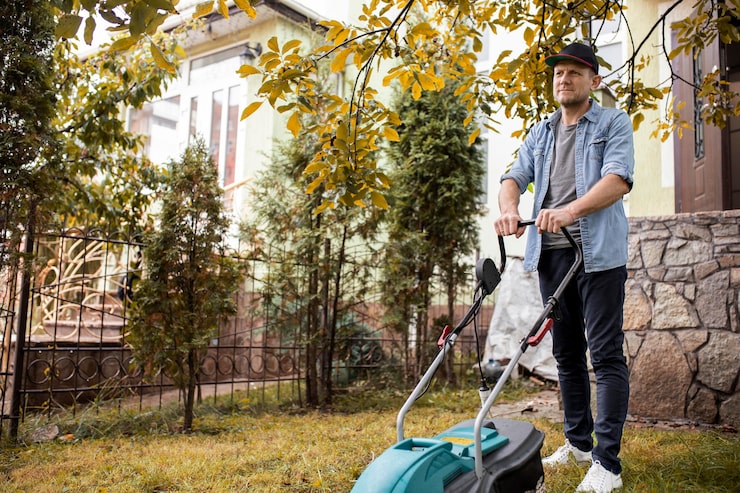What to Expect During a Professional Bush Hogging Service

The Top Safety Precautions Taken by Professional Demolition Crews
July 21, 2025
Top 5 Materials for Culvert Pipes in Dahlonega: Pros & Cons
August 27, 2025Professional bush hogging services provide property owners with efficient land clearing and maintenance solutions for overgrown areas. This service involves using specialized rotary mowers to cut through thick vegetation, small trees, and brush that standard lawn mowers cannot handle. Understanding the process helps property owners prepare for the service and know what results to expect.
Initial Property Assessment
Before beginning work, professional bush hogging crews conduct a thorough property assessment to identify obstacles, hazards, and specific clearing requirements. Technicians walk the property to locate rocks, stumps, metal objects, and other debris that could damage equipment or pose safety risks during operation.
The assessment includes identifying utility lines, septic systems, and underground cables that must be avoided during the cutting process. Crews mark these areas with flags or spray paint to ensure operators can see and avoid them while working.
Property boundaries are clearly established to prevent accidental cutting on neighboring land. Professional services verify property lines using surveys, deed descriptions, or existing fence lines to ensure work stays within the correct boundaries.
Crews also evaluate the terrain to determine the most efficient cutting patterns and identify areas that may require special attention due to steep slopes, wet conditions, or particularly dense vegetation.
Equipment Setup & Preparation
Professional bush hogging operations use specialized tractors equipped with rotary cutters designed for heavy vegetation. These machines feature reinforced cutting decks and heavy-duty blades that can handle brush up to several inches in diameter.
Operators perform pre-work equipment inspections to ensure all systems function properly. This includes checking blade sharpness, hydraulic fluid levels, and safety equipment. Dull or damaged blades are replaced to ensure clean cuts and prevent equipment strain.
Fuel and hydraulic fluid are topped off before beginning work to minimize interruptions during the cutting process. Operators also carry spare blades and basic repair tools to handle minor equipment issues that might arise during the job.
Safety equipment is verified and prepared, including first aid supplies, fire extinguishers, and communication devices. Operators wear appropriate protective equipment such as hard hats, safety glasses, and hearing protection.
Cutting Process & Techniques
Bush hogging typically begins with perimeter cutting to establish clear boundaries and provide access routes for the main cutting operation. Operators work systematically across the property, maintaining consistent cutting heights and overlapping passes to ensure complete coverage.
The cutting height can be adjusted based on property requirements and future land use plans. Areas intended for future cultivation may be cut closer to ground level, while wildlife habitat areas might be left with higher stubble to provide cover for small animals.
Operators maintain steady speeds to ensure even cutting and prevent equipment damage. Moving too quickly can result in incomplete cutting, while moving too slowly reduces efficiency and increases operating costs.
Special attention is given to areas with varying terrain or vegetation density. Operators may need to make multiple passes in particularly thick areas or adjust cutting patterns to accommodate slopes and obstacles.
Debris Management
Professional bush hogging services handle debris removal and disposal as part of the service. Small cut material is typically left in place where it decomposes naturally and provides soil benefits. Larger debris such as fallen branches and small tree trunks are collected and removed from the property.
Some services offer debris burning where permitted by local regulations. This option requires proper fire safety precautions and permits from local authorities. Crews ensure adequate firebreaks are maintained and have water sources available for fire suppression.
Chipping services may be available for properties with significant amounts of woody debris. This process reduces debris volume and creates mulch that can be used for landscaping or soil improvement projects.
Property owners can often choose to keep chipped material for their own use or have it removed entirely, depending on their preferences and future land use plans.
Environmental Considerations
Professional bush hogging services consider environmental impacts when planning and executing work. Timing is often coordinated to avoid nesting seasons for birds and other wildlife that might be affected by vegetation removal.
Erosion control measures are implemented on sloped areas to prevent soil loss after vegetation removal. This may include leaving buffer strips near water sources and avoiding work during wet conditions when soil damage is more likely.
Invasive plant species are identified and managed appropriately during the bush hogging process. Some invasive plants require special handling to prevent spread to new areas, while others can be cut with standard procedures.
Native plant preservation is considered when possible, with operators working around valuable native species or leaving patches of native vegetation for wildlife habitat.
Quality Control & Inspection
Professional services conduct quality control inspections during and after the bush hogging work to ensure all requirements are met. Operators check for missed areas, uneven cutting, and potential safety hazards that need attention.
Property owners typically receive a final walkthrough to review the completed work and address any concerns. This inspection allows for immediate corrections if any areas need additional attention.
Documentation of completed work may include before and after photographs, particularly for insurance or permit requirements. This documentation helps property owners track land management progress over time.
Cleanup & Site Restoration
Final cleanup includes removing any debris that was not part of the original cutting plan, such as trash or metal objects discovered during the work. Equipment tracks and any minor soil disturbance are addressed to leave the property in good condition.
Temporary access routes created for equipment access are restored to their original condition unless the property owner requests they be left for future use. This may involve filling ruts and reseeding disturbed areas.
Gate and fence repairs are completed if any damage occurred during the bush hogging process. Professional services take responsibility for any property damage caused by their equipment or operations.
Post-Service Maintenance Recommendations
Professional bush hogging services often provide recommendations for ongoing property maintenance to keep cleared areas in good condition. This includes suggestions for reseeding, future cutting schedules, and erosion control measures.
Property owners receive guidance on maintaining access routes and managing regrowth to prevent the need for frequent intensive clearing. Regular maintenance schedules help keep costs manageable while maintaining property value.
Follow-up services may be available for properties requiring ongoing management, with professional crews returning on scheduled intervals to maintain cleared areas and prevent overgrowth problems from recurring.



